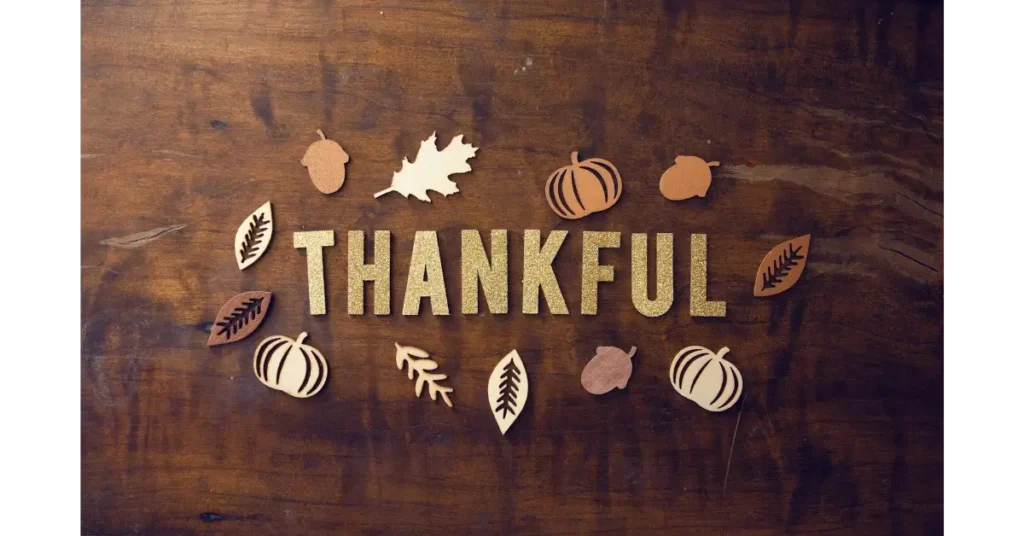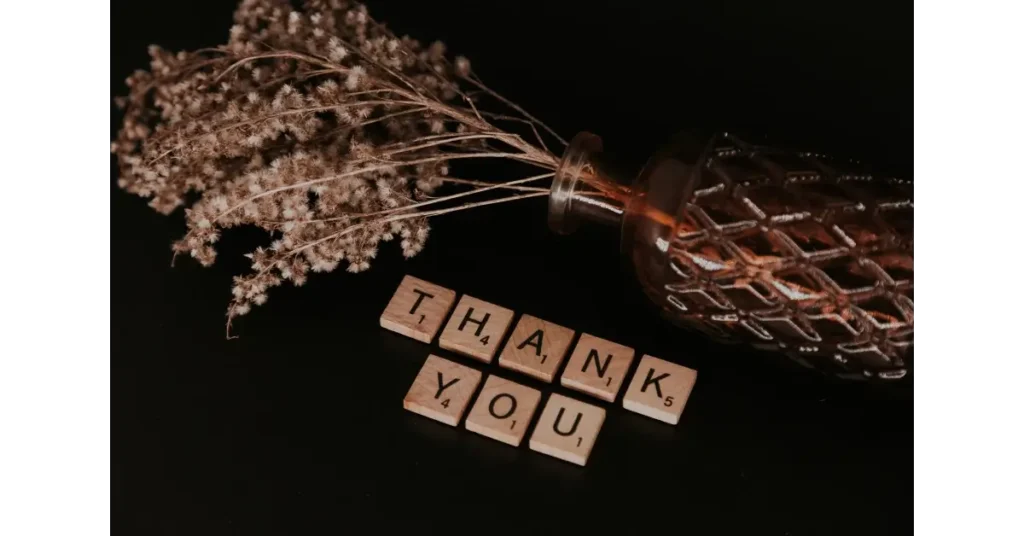Expressing gratitude is more than just a nice gesture—it’s a way of life that brings people closer, fortifies bonds, and cultivates positive vibes in our daily existence. Saying “I am grateful for you” isn’t just about recognizing a kind act or the importance of having loved ones around; it’s about realizing the profound impact these connections have on our happiness in life.
Gratitude has the power to transform our outlook on life. It’s amazing how three simple words can encapsulate so much emotion and appreciation. As we navigate through the ups and downs, taking a moment to say “I am thankful for you” to those who stand by us can make all the difference. It’s an affirmation of the value they bring to our lives and a celebration of the shared journey that we carve out together.
The Essence of Thankfulness
When we say “I am thankful for you,” we’re doing more than expressing a feeling; we’re recognizing the richness that others bring into our lives. Let’s explore what makes this gratitude so pivotal.
Defining Thankfulness
Thankfulness is the acknowledgment of the good that we receive from others and the world around us. It’s an emotional response that signifies our recognition of the efforts and kindness directed our way. This gratitude isn’t merely about polite gestures; it’s about truly feeling and expressing the depths of our appreciation.
The Power of Appreciation
Appreciation has a remarkable ability to transform relationships. When we voice our gratitude, saying “I am thankful for you” to someone, it doesn’t just positively impact them—it enhances our own sense of wellbeing, fosters a more joyful life experience, and builds a stronger sense of community. Our appreciation infuses our interactions with warmth and sincerity, acting as a catalyst for ongoing positivity and connection.
Personal Reflections
When we say “I am thankful for you,” it’s more than a phrase—it’s a heartfelt acknowledgement of our journey together.

Recalling Shared Memories
Our shared experiences serve as the foundation of our gratitude. These moments – from spontaneous adventures to quiet evenings spent together – have woven a rich tapestry of memories that we cherish. We reminisce about the days that defined our bond, like the road trip last summer, that are etched in our minds, or the countless times we’ve erupted into laughter over an inside joke no one else would understand.
Growth Through Support
The support we’ve given and received has catalyzed personal growth and strength. Whether it was the gentle nudge to try something new or the comforting embrace during tough times, this mutual backing has shown us the transformative power of having someone believe in us. Our bond is a testament to how we have flourished, becoming better versions of ourselves through mutual encouragement.
Expressing Thanks
When we say “I am thankful for you,” we’re recognizing the value someone brings into our lives. Here’s how we can convey our thanks effectively.
Verbal Acknowledgment
- Say it directly: “Thank you for being there for me.”
- Be specific about their impact: “I appreciate how you always listen without judgment.”

Words hold immense power. Telling someone “I am thankful for you” can make their day. It’s important to be sincere and express what you’re thankful for specifically, whether it’s their support during tough times or their ability to always make you laugh. This personal touch shows that you’ve noticed their unique contribution to your life.
Acts of Kindness
- Return the favor: Help them with a task they’ve been stressing over.
- Give thoughtful gifts: A book they’ve wanted or bake their favorite treat.
Actions often speak louder than words. Performing acts of kindness is a powerful way of showing gratitude. It demonstrates that you’ve put thought and effort into thanking them, strengthening the bond between you. Whether it’s helping with a project or simply being there when they need someone, these gestures make the sentiment “I am thankful for you” resonate on a deeper level.
Cultivating Gratitude
When we say “I am thankful for you,” we’re opening a gateway to a more fulfilling way of life. Cultivating gratitude isn’t just for thank-you cards; it’s a daily process that enriches our lives and the lives of those around us.
Daily Practices
We can begin our journey of gratitude with some simple daily practices. Each morning, we might:
- Write down three things for which we’re grateful.
- Reflect on why these things matter to us.
By starting our day with a grateful mindset, we set a positive tone for the hours ahead.
Gratitude as a Habit
To make gratitude more than just a fleeting feeling, we need to embed it into our habits. Here’s how we can do that:
- Say ‘thank you’ to at least one person each day for a specific action or quality.
- Share gratitude stories during family dinners or team meetings, illuminating moments that impacted us positively.
Consistency is key—when we regularly acknowledge the good in our lives, gratitude becomes a part of who we are.
The Impact on Relationships
When we say “I am thankful for you,” we initiate ripples of positivity. This powerful phrase can profoundly affect our connections with others, reinforcing trust and appreciation.
Strengthening Bonds
A simple acknowledgment of gratitude reinforces the emotional connection between individuals. When we express how grateful we are, it’s a recognition of the value someone brings into our lives. This act can turn a regular interaction into a moment of connection, making both parties feel valued and respected. Studies suggest that saying Thank You can Transform Your Relationships, not only leading to stronger bonds but also to a genuine recognition of each other’s contributions.
Creating a Positive Environment
Gratitude doesn’t just bond us; it creates an overall atmosphere of positivity. By expressing gratitude, we cultivate a more positive environment where kindness becomes the norm. This can lead to a communal feeling of goodwill and contentedness. For instance, a shared expression of thanks can lead to a reciprocation of kindness within a relationship, further nurturing a supportive and uplifting space for all involved.

Choosing to be vocal about our thankfulness has tangible effects, making our social spaces more harmonious and our relationships more robust.
In Closing
As we approach the end of our discussion on gratitude, we want to ensure our message of “I am thankful for you” resonates deeply and sincerely.
Continued Appreciation
Our journey of gratitude is an ongoing process, much like a garden that requires regular nurturing. It’s vital to remember that expressing thankfulness isn’t a one-time event but a continuous cycle that enriches both our lives and the lives of those we appreciate.
Let us be specific with our gratitude. For instance, rather than a simple thank you, pinpoint the exact reason for your thankfulness. An expression like, “I am thankful for you for your unwavering support during challenging times,” can have a profound impact. Such personalized gestures ensure that your gratitude is both felt and remembered.
Always consider the mode and timing of your appreciation. A heartfelt letter or a face-to-face conversation can often carry more weight than a digital message. Choose your moment to express gratitude in a way that best suits your relationship and the nature of the gratitude you’re conveying.
To visualize the essence of sustained gratitude, think of it in terms of a relay race. Once we receive the baton of kindness, it’s our turn to pass it forward, keeping the cycle of thankfulness in motion.
FAQ – I Am Thankful For You
We often say “I am thankful for you” without fully unpacking the sentiment behind those words. This FAQ section will help clarify the distinctions and practices related to thankfulness.
What is the difference between thankful and grateful?
Thankful and grateful both express appreciation, but there’s a subtle difference. Being thankful often pertains to a specific benefit or kind act received, while grateful carries a deeper, more intrinsic feeling of appreciation that’s less tied to individual events and more to a general state of being.
How to be thankful
Being thankful means actively recognizing the good things in our lives and not taking them for granted. This can include:
Acknowledgment: Take a moment to acknowledge the help or kindness you’ve received.
Expression: Communicate your appreciation through words or actions.
3 practical tips on how to be thankful
1. Keep a gratitude journal: List at least three things daily that you’re thankful for, which can help to cement the practice of thankfulness into your routine.
2. Express thanks regularly: Whether it’s a quick text or a handwritten note, make it a habit to tell others why you’re thankful for their presence in your life.
3. Mindfulness: Spend a few minutes each day in reflection, contemplating the positives in your life and the reasons behind your thankfulness.
Gratitude grows from our actions and words. As we carry on through life, let’s pledge to foster gratitude not only through our words but through our actions. A small act of kindness, a smile, a helping hand are all tangible embodiments of the sentiment, “I am thankful for you,” creating ripples of positivity that extend far beyond our immediate circle. Let us know how you express your thankfullness toward the people who are important to you. Let’s share our experiences.
If you liked this blog post about the topic: I am thankful for you, don’t forget to leave us a comment down below to tell us about your experience with it.


